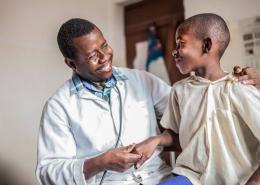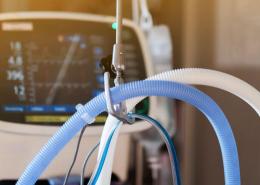A Superbug Problem: When Routine Surgeries Turn Dangerous

You go in for an elective knee replacement surgery, hoping to be able to climb the stairs again without pain, and end up with more than you bargained for: a potentially life-threatening bacterial infection caused by Staphylococcus aureus (also referred to as S. aureus, Staphylococcus, or staph infection.)
S. aureus is a common bacterium found on the skin and in the nose that is usually harmless. This all changes if it enters the body through cuts and grazes. To compound this in recent years, potentially life-threatening, antibiotic-resistant strains have emerged known as methicillin-resistant Staphylococcus aureus (MRSA). Globally, about 700,000 people die each year from antibiotic-resistant infections. That’s more than the combined deaths from tetanus, cholera and measles.
With the global rise of antimicrobial resistance (AMR), scientists are pursuing vaccines as a way to help prevent bacterial infections and curb our reliance on antibiotics. “Antibiotics treat serious illnesses, but with a vaccine, the patient may be spared from a potentially life-threatening infection,” says Annaliesa Anderson, VP and Chief Scientific Officer for Bacterial Vaccines in Pearl River, NY. “The goal of preventing the infection is to reduce antibiotic use and the AMR burden.”
A Golden Hitchhiker
Staphylococcus aureus, named for the golden-yellow (aureus) grape-like (Staphylococcus) cells, causes a variety of illnesses including pneumonia and infections of the heart, blood and bones. In addition, it’s responsible for approximately 20 percent of surgical site infections.
Part of what makes it so dangerous is its ability to hitch “rides” on carriers. Unlike flu viruses, which need to infect a person in order to spread, it can be easily carried by a non-infected person and then spread to skin and open wounds. S. aureus bacteria are also particularly persistent in hospital settings because of their ability to stay alive for weeks on surfaces. Evidence suggests nearly 30 percent of the population carries S. aureus on the skin or the nose without being infected.
Vulnerable Patients
Over the past two decades, cases of hospital-acquired S. aureus infections have been on the rise. Patients in hospital settings are vulnerable to these infections simply because there are so many sites for transmission— an open wound from surgery, catheter tubes and ventilators. In the case of orthopedic surgeries that require implantation of hardware, such a screw, plate or rod, there is a high risk for infection, because of the bacteria’s ability to produce a biofilm that shields it from antibiotics and immune defenses. The bacteria sticks to the implanted device, forming a colony under the protective film.
S. aureus bacteria are able to quickly develop resistance to even newly created antibiotics, by either getting resistance mechanisms from other bacteria that they encounter, or by mutating their own genes to render the antibiotic ineffective. As scientists increase their understanding of the way S. aureus bacteria function, they’re better able to create a vaccine that could reduce our reliance on antibiotics by preventing the infections from occurring in the first place—thus breaking the cycle of resistance. “At Pfizer, we took the approach to find out what S. aureus needed in order to infect a person, and we tried to design our vaccine to disable these mechanisms,” says Anderson. “To date, no vaccine has been shown to prevent S. aureus infections and we are hopeful that using this approach will help to reduce or prevent this potentially life-threatening disease.”





